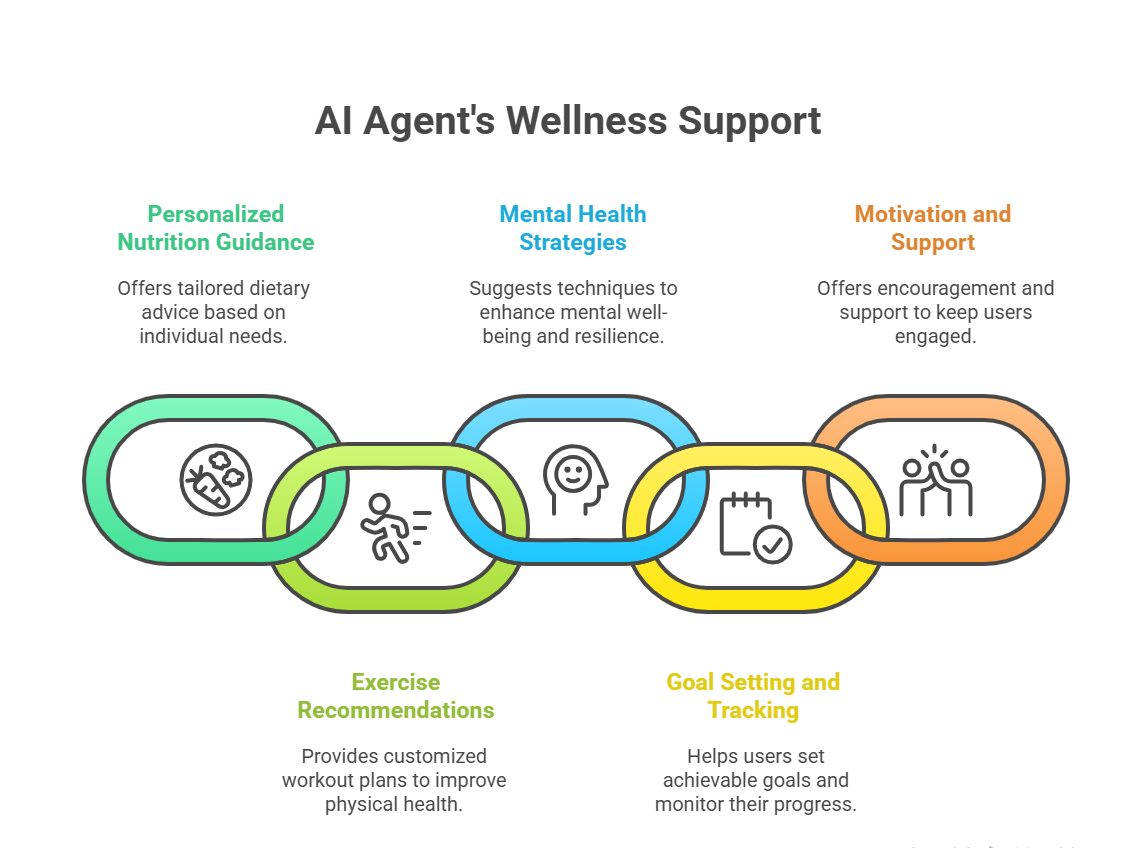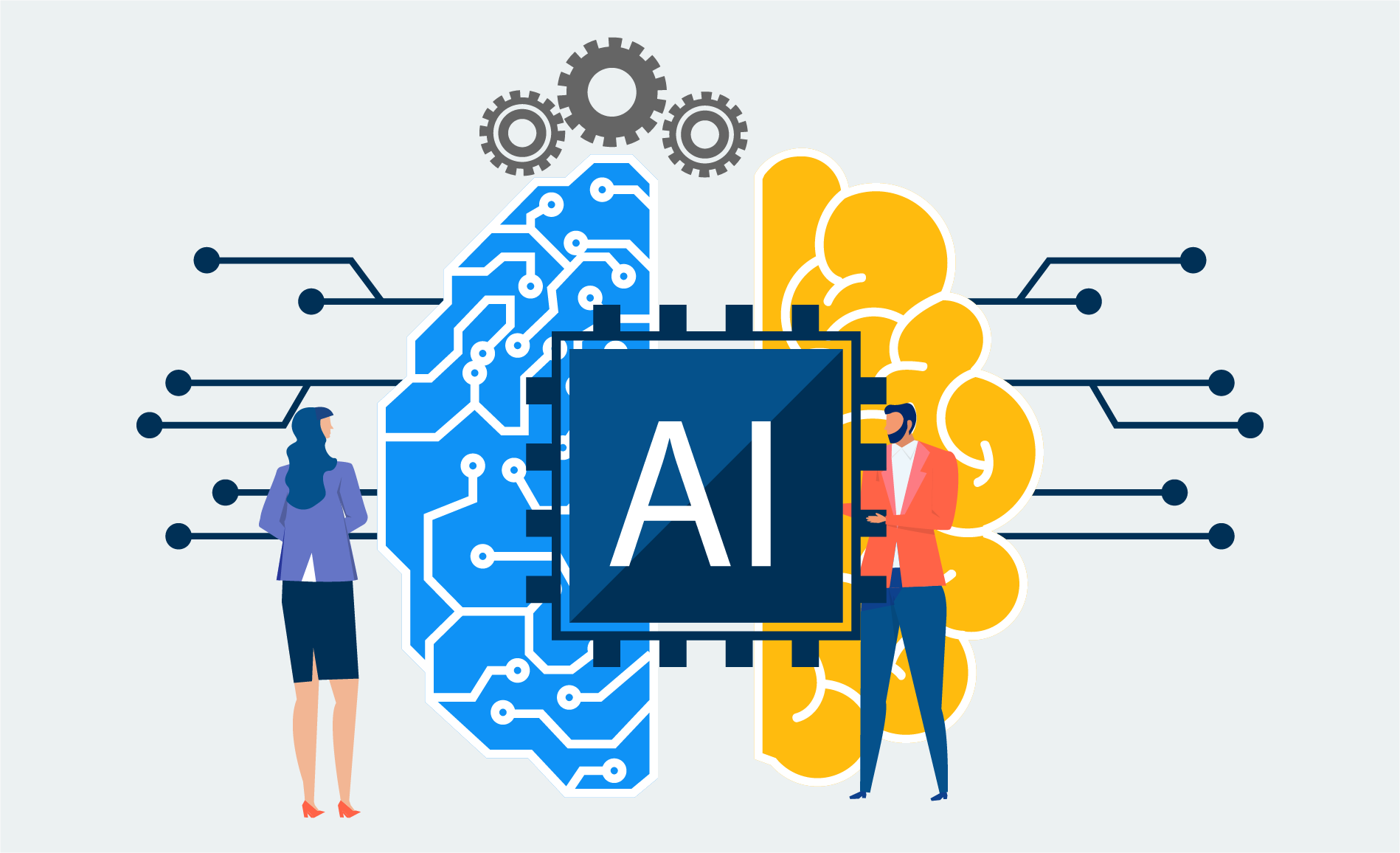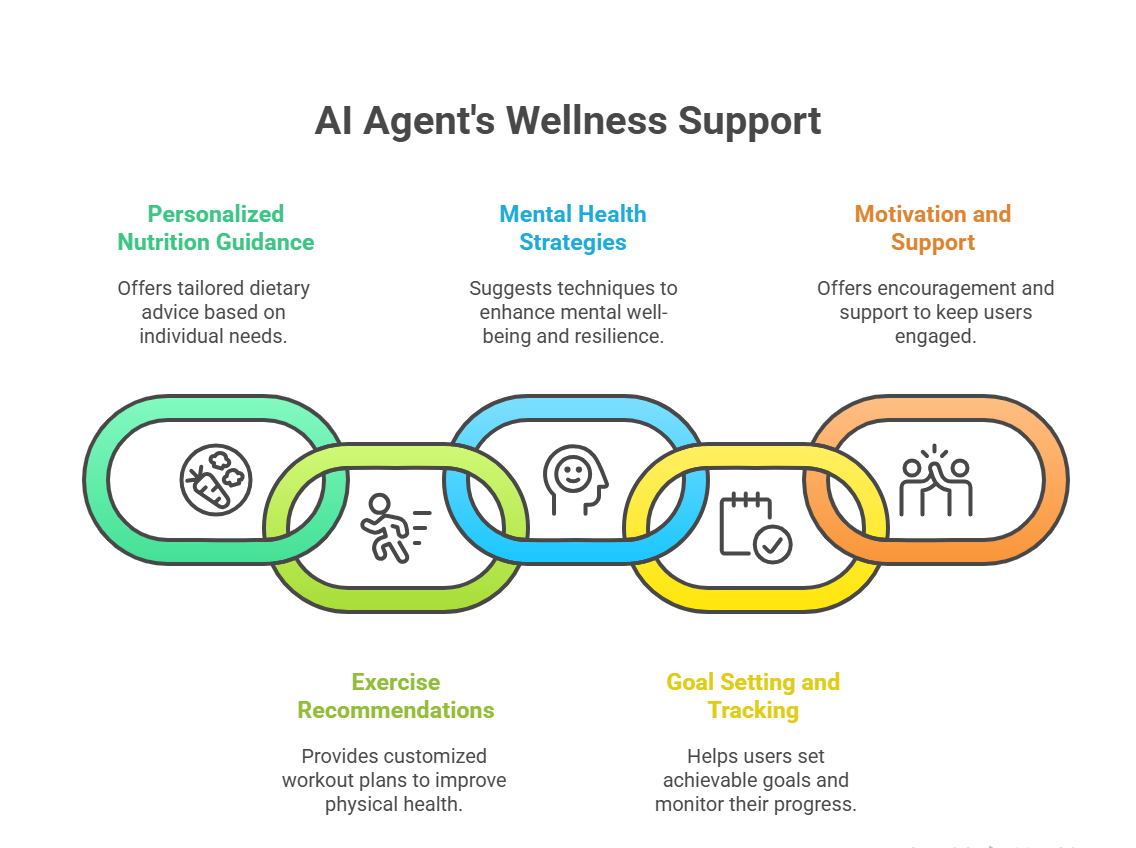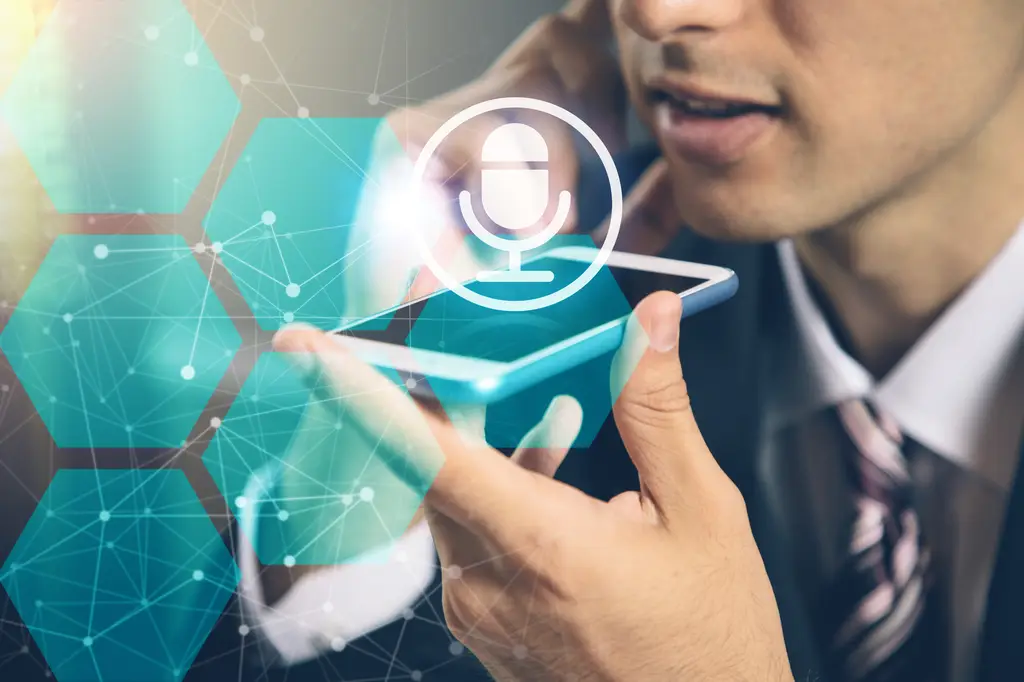In a world saturated with one-size-fits-all diet plans and generic workout apps, a quiet revolution is taking place. The future of personal wellness is here, and it’s not just digital—it’s intelligent. We are entering the era of the AI Health Coach, a sophisticated digital companion poised to redefine how we manage our fitness, nutrition, sleep, and mental well-being. This isn’t just another app; it’s a hyper-personalized, data-driven guide in your pocket, available 24/7.
This article delves deep into the world of AI health coaching. We’ll explore the technology that powers these platforms, examine their real-world effectiveness, and confront the critical risks and ethical questions that will shape their future. If you’ve ever wondered if technology could truly understand your unique health needs, read on

Section 1: The Dawn of the AI Health Companion
For years, the digital wellness market was a fragmented collection of single-purpose apps. You had one for counting calories, another for tracking your runs, a third for meditation, and maybe a fourth for monitoring your sleep. While useful, these tools lived in silos, failing to see the bigger picture: that our health is an interconnected system. The rise of the AI Health Coach marks a fundamental shift from this siloed approach to a truly holistic and integrated platform.
The Perfect Storm: Why Now?
The emergence of the AI Health Coach isn’t a coincidence. It’s the result of a powerful convergence of three key technological and societal trends:
- Ubiquitous Wearable Technology: The market is flooded with devices that provide a constant stream of high-quality health data. Smartwatches like the Apple Watch, fitness bands from Fitbit and Garmin, smart rings like the Oura Ring, and even medical devices like continuous glucose monitors (CGMs) are now mainstream. They track everything from our heart rate variability (HRV) and sleep stages to blood sugar levels and activity patterns. This data is the essential fuel for any personalized AI engine.
- Matured Artificial Intelligence: The “brain” needed to interpret these vast data streams has finally arrived. Advanced machine learning (ML) algorithms, deep learning models, and especially the recent explosion of Large Language Models (LLMs) provide the analytical power to identify subtle patterns, predict health outcomes, and generate the nuanced, actionable insights that define a true coaching experience.
- A Surge in Consumer Demand: Technology is meeting a powerful, pre-existing consumer demand. Modern users are no longer satisfied with generic advice. Market data shows a clear preference for personalized experiences, with over 60% of fitness app users favouring applications that offer AI-driven customisation. We are actively seeking tools to bridge the gap between our health intentions and our daily actions, and AI coaches are uniquely positioned to provide the continuous support and reinforcement needed to make lasting changes.
This powerful combination has moved the industry beyond static programs to intelligent, adaptive platforms. An AI coach can see that a poor night’s sleep (tracked by your smart ring) led to increased sugar cravings the next day (logged via photo) and a less intense workout (measured by your watch), and then offer tailored advice that addresses the root cause, not just the symptom.
Section 2: Under the Hood: The Anatomy of an AI Coaching Engine
So, how does an AI Health Coach actually work? It’s a sophisticated process that involves gathering diverse data and feeding it into an intelligent core that transforms that raw information into personalized, actionable guidance.
The Data Ingestion Layer: Creating a 360-Degree Health View
The foundation of any AI coach is its ability to aggregate data from multiple sources seamlessly.
- Wearable & IoT Integration: The coach syncs with health data hubs like Apple Health or Google Fit, allowing it to pull in a continuous stream of biometric data from your favourite devices. This includes heart rate, HRV, sleep stages, activity levels, and calories burned. For users managing specific conditions, direct integration with devices like CGMs or smart scales is crucial.
- Frictionless User Logging: Manual data entry is a major reason people abandon wellness apps. The new generation of coaches makes this easier than ever:
- Computer Vision: Leading nutrition apps like Noom and MyFitnessPal use your phone’s camera to identify foods from a photo, automatically estimating portion sizes and calculating nutritional information.
- Natural Language Processing (NLP): Platforms like Helsa allow you to simply speak or type what you ate or how you feel (e.g., “I had a chicken salad for lunch and I’m feeling a bit stressed”). The NLP engine understands and logs the information correctly.
- Clinical Data Integration: For a truly holistic profile, the most advanced platforms are beginning to integrate clinical data. The ability to incorporate lab results—such as HbA1c, cholesterol panels, and other key biomarkers—provides objective medical context that enriches the data from wearables and user logs.
The AI Core: Turning Data into Decisions
Once the data is collected, it’s fed into the AI “brain,” which uses a variety of models to power the coaching experience.
- Predictive Machine Learning: Conventional ML models are used for classification and prediction. For example, an algorithm might analyse an initial questionnaire to place a user into a specific activity profile (sedentary, active, etc.) or predict their risk for a certain condition based on incoming data.
- Large Language Models (LLMs): This is the game-changer. LLMs like OpenAI’s GPT-4 are transforming chatbots from rigid, scripted agents into fluid, empathetic conversational partners. Coaches like the WHOOP Coach and Wysa leverage LLMs to engage in natural dialogue, answering complex questions and providing support that feels human-like.
- NLP for Empathy: A successful AI coach needs to appear empathetic. This goes beyond simple sentiment analysis. The AI must infer the user’s underlying thoughts and feelings from their text. Mental health platforms like Wysa and Youper build their conversational flows on established therapeutic frameworks like Cognitive Behavioral Therapy (CBT) to ensure responses are not only empathetic but also helpful and safe.

This complex architecture allows the AI to move beyond just showing you data on a dashboard and towards becoming a true partner in your health journey.
Section 3: Promise vs. Peril: Efficacy, Risks, and the Future
While the technology is impressive, two critical questions remain: Does it actually work, and is it safe? For an AI Health Coach to be more than a novelty, it must deliver tangible results while navigating a minefield of risks.
The Evidence: Can an AI Be as Good as a Human?
A growing body of scientific literature supports the effectiveness of AI-driven health interventions.
- Clinical Efficacy: Systematic reviews have concluded that AI-driven dietary recommendations can produce significant improvements in clinical outcomes, including better glycemic control and metabolic health. Specific studies have shown remarkable results, such as a 39% reduction in IBS symptoms and a 72.7% remission rate for type 2 diabetes using AI-guided dietary plans.
- AI vs. Human Coaches: The evidence presents a nuanced picture. A 10-month randomised controlled trial directly comparing goal attainment between a group coached by humans and a group coached by an AI chatbot found that the AI coach was just as effective as the human coaches. Researchers believe the AI’s perfect consistency in applying coaching theory compensated for its lack of genuine empathy. The consensus is that AI excels at accessibility, consistency, and data-driven tasks, while humans provide irreplaceable value in navigating complex emotional issues.
The “Garbage In, Gospel Out” Problem
The entire AI coaching ecosystem is built on a potentially fragile foundation: the accuracy of its input data. There is a significant disconnect between the sophisticated AI and the often-unverified quality of the data from consumer-grade wearables.
- Inaccurate Metrics: Studies have shown that while most wearables are good at tracking resting heart rate, their accuracy can degrade significantly during intense exercise. Estimates of energy expenditure (calories burned) are notoriously unreliable across many devices.
- Algorithmic Bias: A critical and well-documented issue is that the optical sensors (PPG) used in most wearables can be less accurate for individuals with darker skin tones. This creates a “Garbage In, Gospel Out” scenario where a user might receive authoritative advice based on fundamentally flawed data, perpetuating health disparities.
Navigating the Ethical Minefield
The implementation of AI coaching is fraught with risks that must be proactively managed to build user trust.
- Data Privacy: AI systems collect the most sensitive personal data imaginable. The risk of this data being breached or de-anonymized is significant.
- The Accountability Vacuum: If an AI coach provides harmful advice, who is responsible? The developer? The hardware manufacturer? The user? This lack of clarity is a major barrier to trust.
- AI “Hallucinations”: Generative AI can sometimes generate outputs that are confident and fluent but factually incorrect. In a health context, this could be incredibly dangerous. Mitigating this requires robust safety guardrails and grounding the AI’s responses in curated, evidence-based knowledge.
- The Cultural Competence Gap: Most nutrition apps are designed with a Western diet as the default, failing to accurately recognise or provide guidance for the majority of the world’s cuisines. This isn’t just an inconvenience; it’s a systemic failure that limits market reach and can automate health inequities. Platforms like HealthifyMe, which has built an extensive database of regional foods, are pioneers in solving this critical problem.
The Future Trajectory: What’s Next?
The field is evolving rapidly. The future is likely to be a sophisticated hybrid model where the AI coach acts as a powerful force multiplier for human experts. The AI will handle continuous monitoring and first-line support, intelligently escalating complex cases to doctors and therapists. This will be powered by novel biosensors—like smart clothing and non-invasive patches—that provide an even richer stream of data, enabling a shift from reactive analysis to proactive, predictive health alerts that can catch issues before they become critical.
The ultimate winner in this market won’t just sell software; they will build a trusted, indispensable, and lifelong health companion. They will be the ones who solve the challenges of clinical validation, ethical responsibility, and cultural competence to deliver on the true promise of hyper-personalized wellness.



